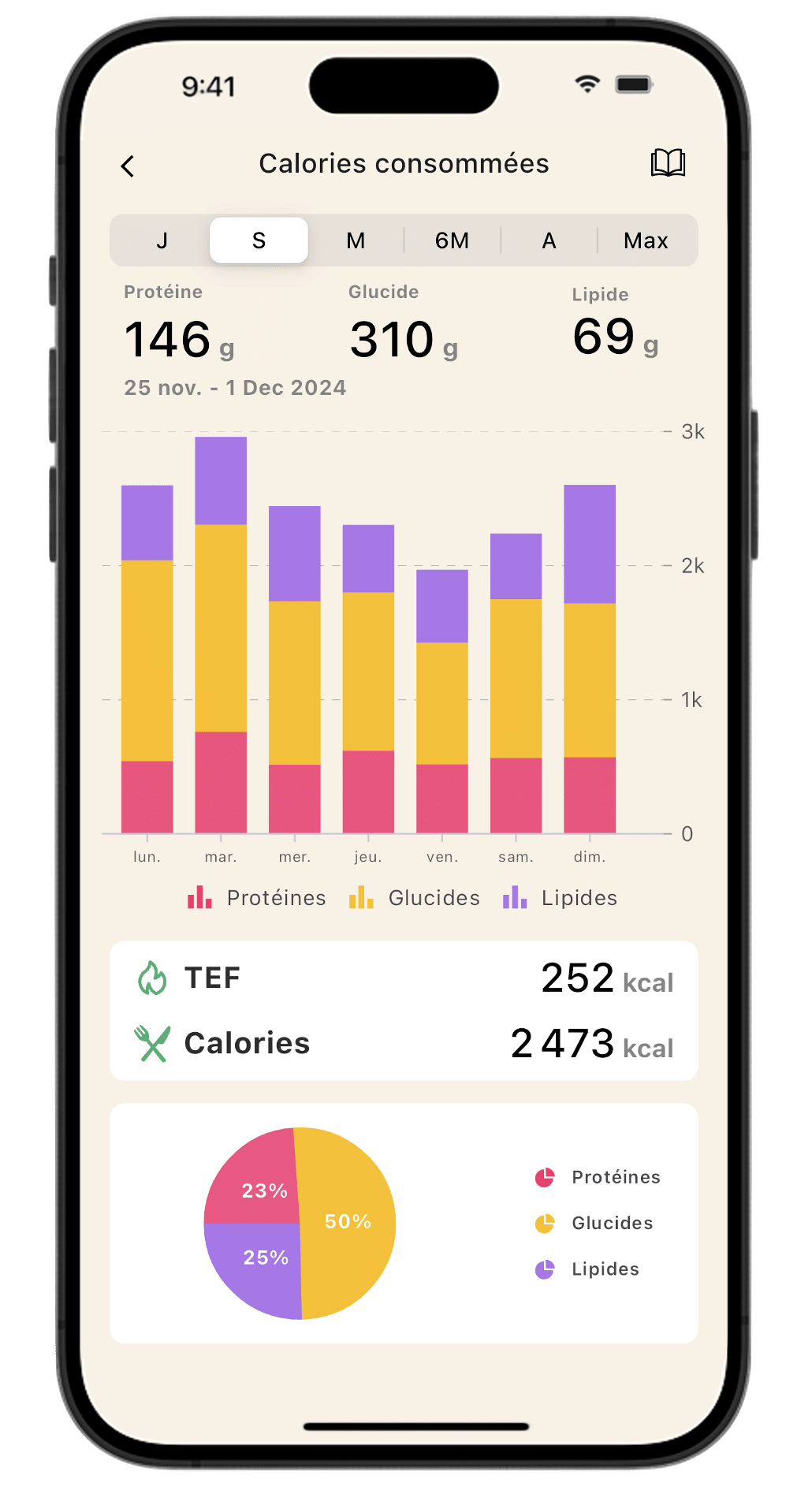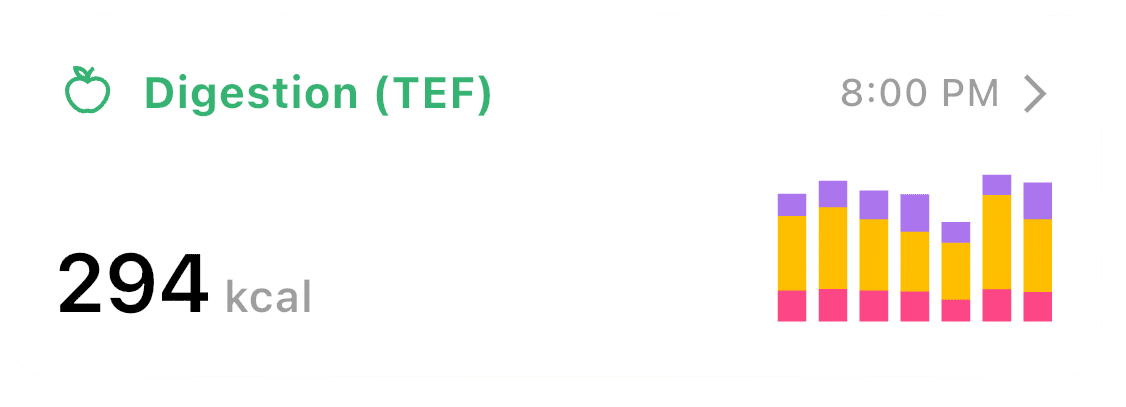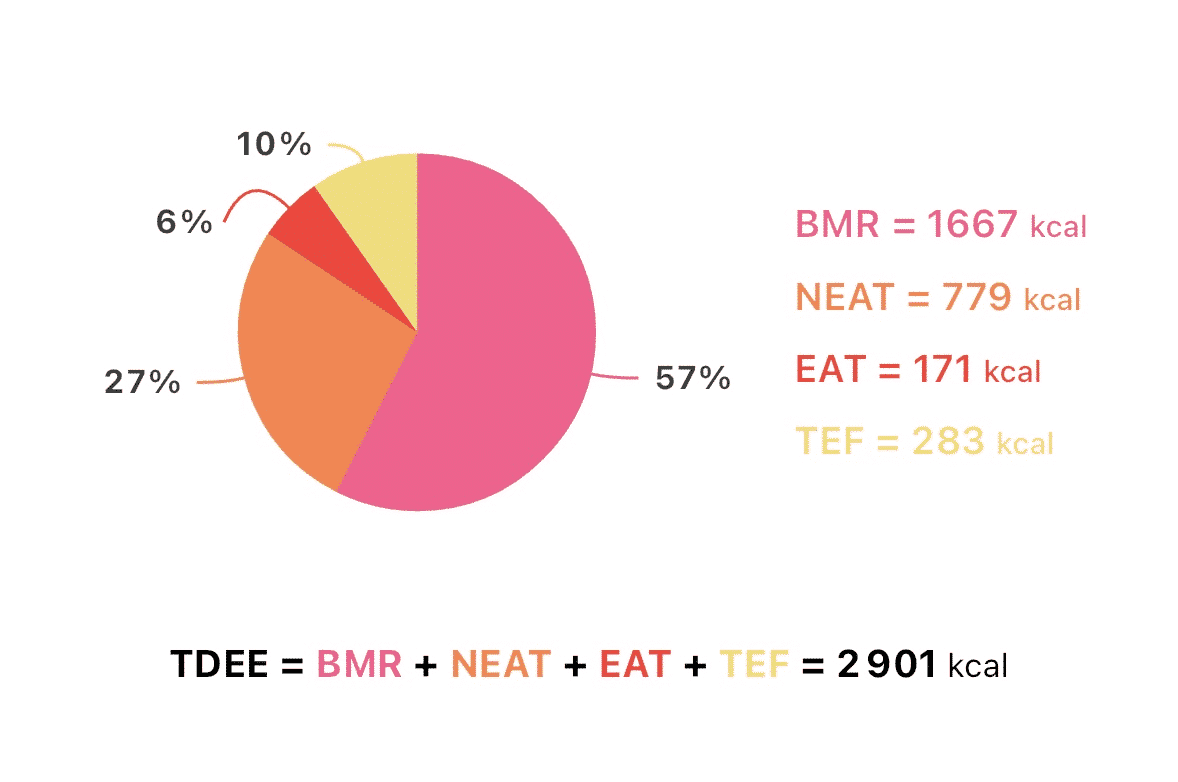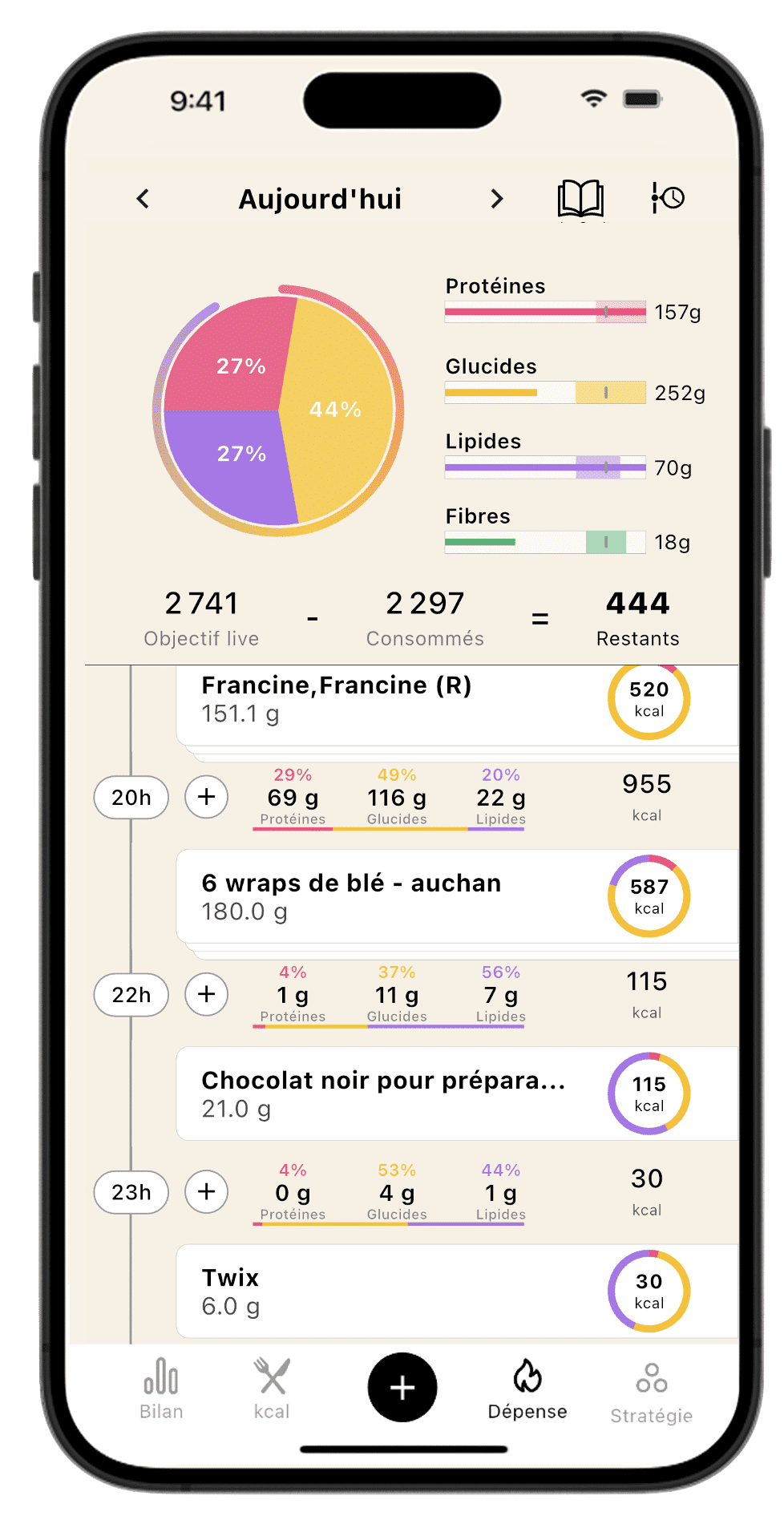Track Your Digestion Energy (TEF)
Lean calculates the energy you burn digesting your food through the Thermic Effect of Food (TEF).


Calculate your digestion effect based on your eating habits and consumption style. Accurately track and optimize the thermic effect of your food.
Lean is the only app on the market that accounts for and precisely tracks the Thermic Effect of Food (TEF). In short: eating also burns energy. Digestion energy is too often overlooked, even though it represents a significant part of your daily energy expenditure.
TEF (Thermic Effect of Food)

TEF (Thermic Effect of Food) is the term used in scientific literature to describe the energy your body spends digesting the food you eat.
Too often overlooked, TEF is actually the third-largest source of energy expenditure in the human body — even ahead of EAT(the energy burned through exercise).
On average, TEF accounts for about 10% of your daily caloric intake.
However, this percentage varies depending on the type of macronutrient (proteins, carbohydrates, fats).

How does it work?
In the Lean app, you’ll track the foods you consume in the “kcal” tab of the application.

The Lean app automatically calculates the energy your body will burn digesting the foods you log.
Lean always factors in the Thermic Effect of Food (TEF) when calculating your “Remaining” calories.
How is TEF calculated?
Each food contains macronutrients: Proteins, Fats and Carbohydrates..
When these macronutrients are absorbed, your body burns energy to digest them. However, the Thermic Effect of Food varies significantly depending on the macronutrient:
| Macronutrient | % of calories burned during digestion |
| Proteins | 20 à 30 % |
| Carbohydrates. | 5 à 10 % |
| Fats | 1 à 3 % |
Why is there such a difference?
It comes down to the chemical complexity and metabolic pathways required to process each molecule:
- Proteins must be broken down into amino acids, transformed, and sometimes excreted (e.g., urea), which uses more energy.
- Carbohydrates must be converted into glucose, then stored or used.
- Fats are almost ready for storage as they are, so the body does very little work.
Key takeaway:
- The higher the TEF, the more calories your body burns just through digestion..
Complete Lean Tutorial
COMMENT COMPTER SES CALORIES AVEC LEAN ! F BOY
FAQ
How can I effectively increase my TEF?
The macronutrient that produces the highest thermic effect is protein. A high-protein diet can help you burn an additional 100 to 200 kcal per day, effortlessly.
It’s almost like “free” calorie burn — take advantage of it!
For more details:
Comment j’ai DOUBLÉ ma dépense calorique pour PERDRE DU GRAS !
Is there a link between TEF and NEAT?
Strictly speaking, no, there’s no direct link between the Thermic Effect of Food (TEF) and Non-Exercise Activity Thermogenesis (NEAT).
However, as explained in the NEAT section that :
- The more you walk
- The more your NEAT increases
- The more calories you’ll have available
(remember: walk more to eat more) - And the more your TEF will increase
So yes — indirectly, the more your NEAT increases, the more your TEF will also increase! Because the energy you burn while walking gives you access to more calories in your diet, which means more food to consume and digest.
